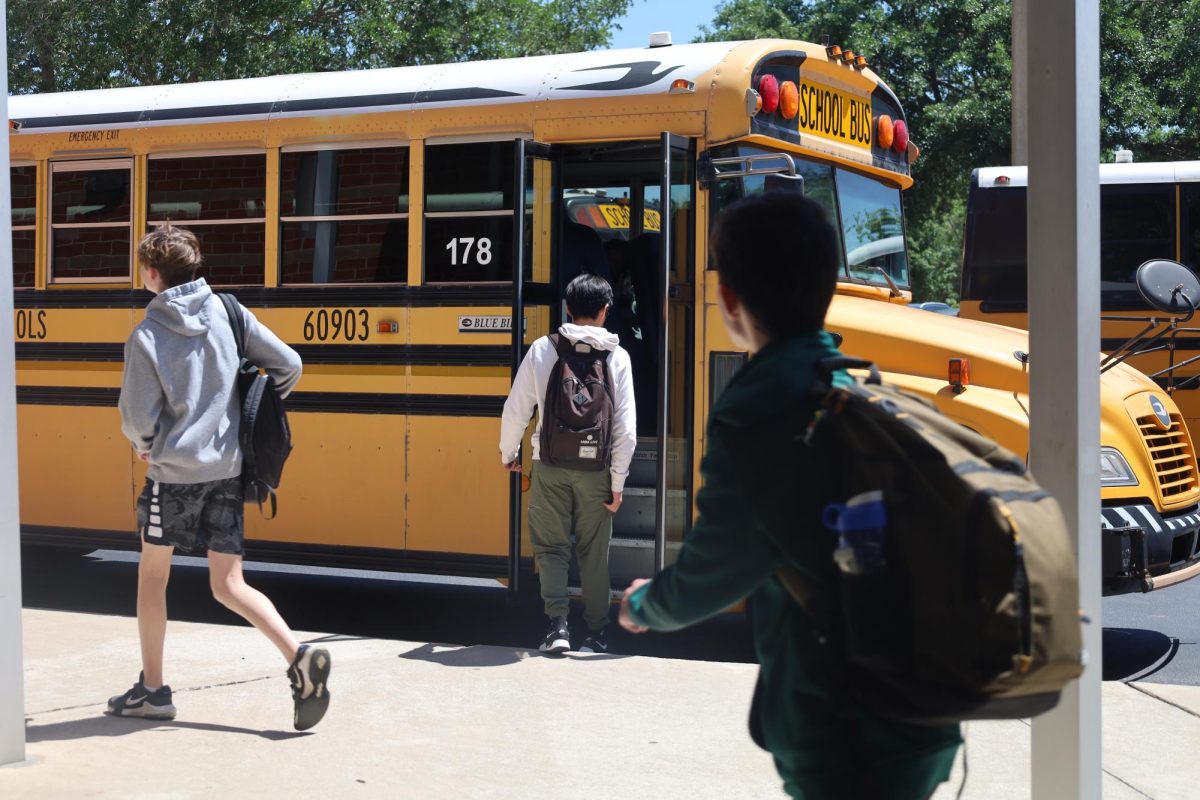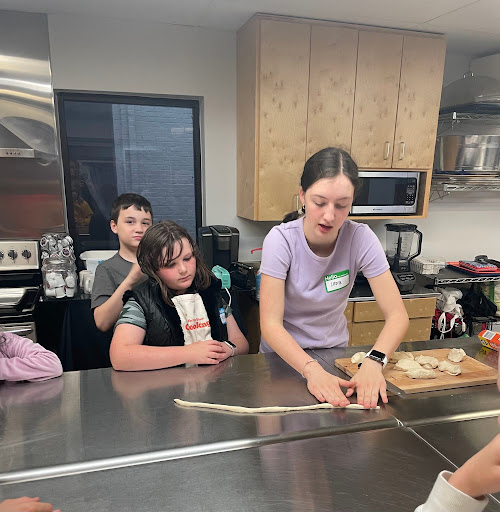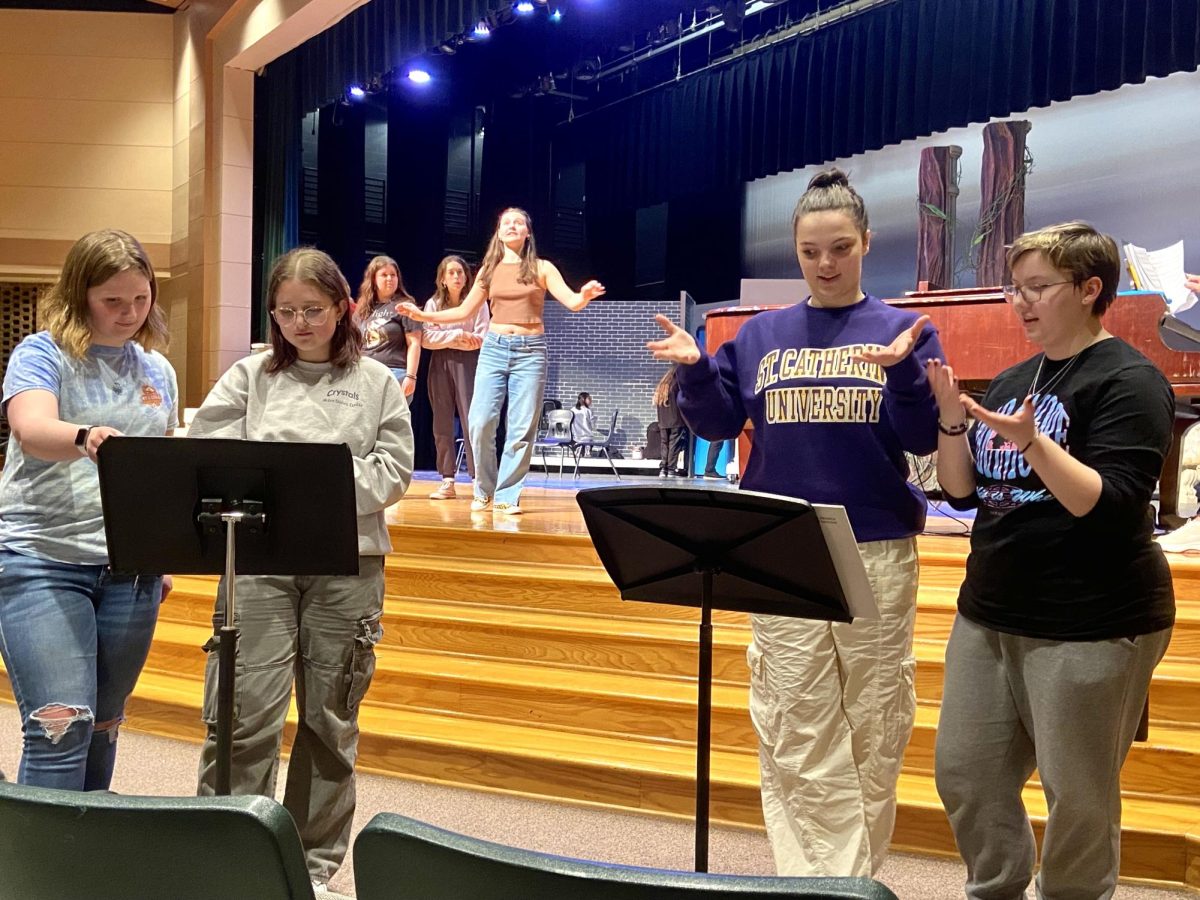Every year, millions of preserved specimens ranging from frogs to cats are brought into science classrooms for students to learn more about animal anatomy. However, behind all the eager faces of teachers and students lies a dark secret: many of the animals used in their labs are seized from their natural habitats and inhumanely slaughtered for the sole purpose of being dissected. When a method of student learning comes at the expense of biological life, it should be replaced by more humane learning strategies.
Animal dissections were first implemented in the American K-12 curriculum in the 1920s. At this time, the most common dissected specimens were frogs, cats and fetal pigs due to their availability and anatomies. Since then, the overwhelming majority of schools have used dissection labs as a means to teach students about animal structure. Other animals such as dogfish sharks, rats and salamanders have also been incorporated as dissection specimens within high schools. According to the American Anti-Vivisection Society, it is estimated that around six million animals are dissected in American schools annually.
“Traditional methods of dissection are very prevalent.” said Joseph Akpan, a Professor of Science Education at Jacksonville State University. “We need to be careful about how we use animals for education and use them ethically. Schools need to be transparent and document where these animals are coming from.”
Despite the popularity of dissections, educators and students alike fail to recognize the inherent unethical nature of these labs. The issue stems from the industry responsible for providing schools with preserved specimens. Oftentimes, animals are directly taken from the wilderness and forced to live in inhumane conditions within biological supply companies before they are put to death. The Humane Society of the United States finds that many animals are caught from the wild in large groups, and are treated unfairly through the means that they are captured, handled and ultimately killed by.
In a landmark study from the Animal Welfare Institute examining frogs bound for dissection, researchers found that the frogs were captured and crammed into large sacks before being shipped off to the supply company. At the supply company, the frogs were placed in large tanks where they were kept for many weeks without any access to food until the company received a shipment request.
“There are millions of animals killed for the specific purpose of dissection,” said Nicole Green, the Director of Animalearn at the AAVS. “Animals like pigs and cows are taken from slaughterhouses and different sources. There’s so much cruelty that’s involved with all of these industries where animals are basically seen as a tool, they’re not looked at as living sentient beings.”
Awareness around this issue often falls to the wayside due to the secrecy of the sourcing process. Like many other school districts, dissection labs have been a longtime staple of FUHSD science courses. Most of the specimens purchased by schools within the district are sourced from the Carolina Biological Supply Company, the largest international supply company in the industry. While Carolina itself claims to use humane sourcing practices, it is difficult for educators to determine the details of how the company obtains its specimens prior to their arrival in classrooms. Regardless of the ethics of their practices, all supply companies should be more transparent in ensuring that schools know the source of their specimens. The same goes for Carolina, which already works with the government to ensure the ethicality of their methods.
“We get all of our preserved materials from ethical sources,” said Keith Barker, the manager of product safety and compliance at the Carolina Supply Company. “Most come from food industry sources, including marine specimens, fetal pigs and even the frogs. Cats are procured from governmentally supervised or operated shelters and have been euthanized before we receive them. We believe in the humane treatment of animals and ethical sourcing, and that’s how we operate.”
Despite the humane practices of Carolina, there are many other companies across the United States that use unethical sourcing methods to supply high schools with dissection material. Because of this, some teachers choose to implement alternative methods after learning about these unethical practices. Computer programs and virtual activities have subtly started to gain prominence within science classrooms. Digital dissection programs such as Expandable Mind Software, Digital Frog 2.5 and Merge Labs allow students to explore animal anatomy without using products from the dissection industry. Despite viable alternatives, most American schools still rely on the practices of dissecting animals.
“Students don’t really think about where the animal parts are coming from, so more knowledge on that would be beneficial for students before doing the dissection,” said Esha Rai, a senior who participated in a recent dissection in her physiology class. “I think schools should definitely be more transparent about where these animals are coming from, and based on that students should be able to make the decision if they want to continue with this dissection or not.”
As the issue regarding dissection labs comes to light, schools should be aware of how dissection specimens are sourced, and supply companies themselves should strive to be more transparent to customers about where they source their animals. No animals should suffer for the sake of a student’s education.
“I think there’s a long way to go in terms of eliminating dissection,” said Green. “ It’s important to have discussions, especially among students, because animals are living beings and we should be thinking about them as individuals.”
This story was originally published on The Epic on October 10, 2023.






![It was definitely out of my comfort zone to get [the dress] and decide I loved it enough not to wait and risk not having something that memorable.](https://bestofsno.com/wp-content/uploads/2024/04/Precious_20180902_JRS_00008_ed1.jpg)


![Sophomore Sahasra Mandalapu practices bharatanatyam choreography in class. These new dances will be performed in an annual show in February. Mandalapu found that practicing in class helped her overcome stage fright during her performances. “When [I] get on stage, Im nervous Im going to forget, even though Ive done it for so long,” Mandalapu said. “Theres still that little bit of stage fright [when] I second-guess myself that I dont know it enough, but I do because Ive been practicing for a whole year.”](https://bestofsno.com/wp-content/uploads/2024/05/Sahasra-6-Large-1200x844.jpeg)

![In their full runway outfits, (from left) Audrey Lee 25, Olivia Lucy Teets, 25, Fashion Design teacher Ms. Judy Chance, and Xueying Lili Yang pose for a photo. All three girls made it to Austin Fashion Week by getting in the top 10 in a previous runway show held by Shop LC.
[I like my students] creativity and how they can look at a fabric and make it their own, Ms. Chance said.](https://bestofsno.com/wp-content/uploads/2024/04/IMG_9686-e1714088765730-1129x1200.jpeg)














![IN THE SPOTLIGHT: Junior Zalie Mann performs “I Love to Cry at Weddings,” an ensemble piece from the fall musical Sweet Charity, to prospective students during the Fine Arts Showcase on Wednesday, Nov. 8. The showcase is a compilation of performances and demonstrations from each fine arts strand offered at McCallum. This show is put on so that prospective students can see if they are interested in joining an academy or major.
Sweet Charity originally ran the weekends of Sept. 28 and Oct. 8, but made a comeback for the Fine Arts Showcase.
“[Being at the front in the spotlight] is my favorite part of the whole dance, so I was super happy to be on stage performing and smiling at the audience,” Mann said.
Mann performed in both the musical theatre performance and dance excerpt “Ethereal,” a contemporary piece choreographed by the new dance director Terrance Carson, in the showcase. With also being a dance ambassador, Mann got to talk about what MAC dance is, her experience and answer any questions the aspiring arts majors and their parents may have.
Caption by Maya Tackett.](https://bestofsno.com/wp-content/uploads/2024/02/53321803427_47cd17fe70_o-1-1200x800.jpg)
![SPREADING THE JOY: Sophomore Chim Becker poses with sophomores Cozbi Sims and Lou Davidson while manning a table at the Hispanic Heritage treat day during lunch of Sept 28. Becker is a part of the students of color alliance, who put together the activity to raise money for their club.
“It [the stand] was really fun because McCallum has a lot of latino kids,” Becker said. “And I think it was nice that I could share the stuff that I usually just have at home with people who have never tried it before.”
Becker recognizes the importance of celebrating Hispanic heritage at Mac.
“I think its important to celebrate,” Becker said. “Because our culture is awesome and super cool, and everybody should be able to learn about other cultures of the world.”
Caption by JoJo Barnard.](https://bestofsno.com/wp-content/uploads/2024/01/53221601352_4127a81c41_o-1200x675.jpg)





